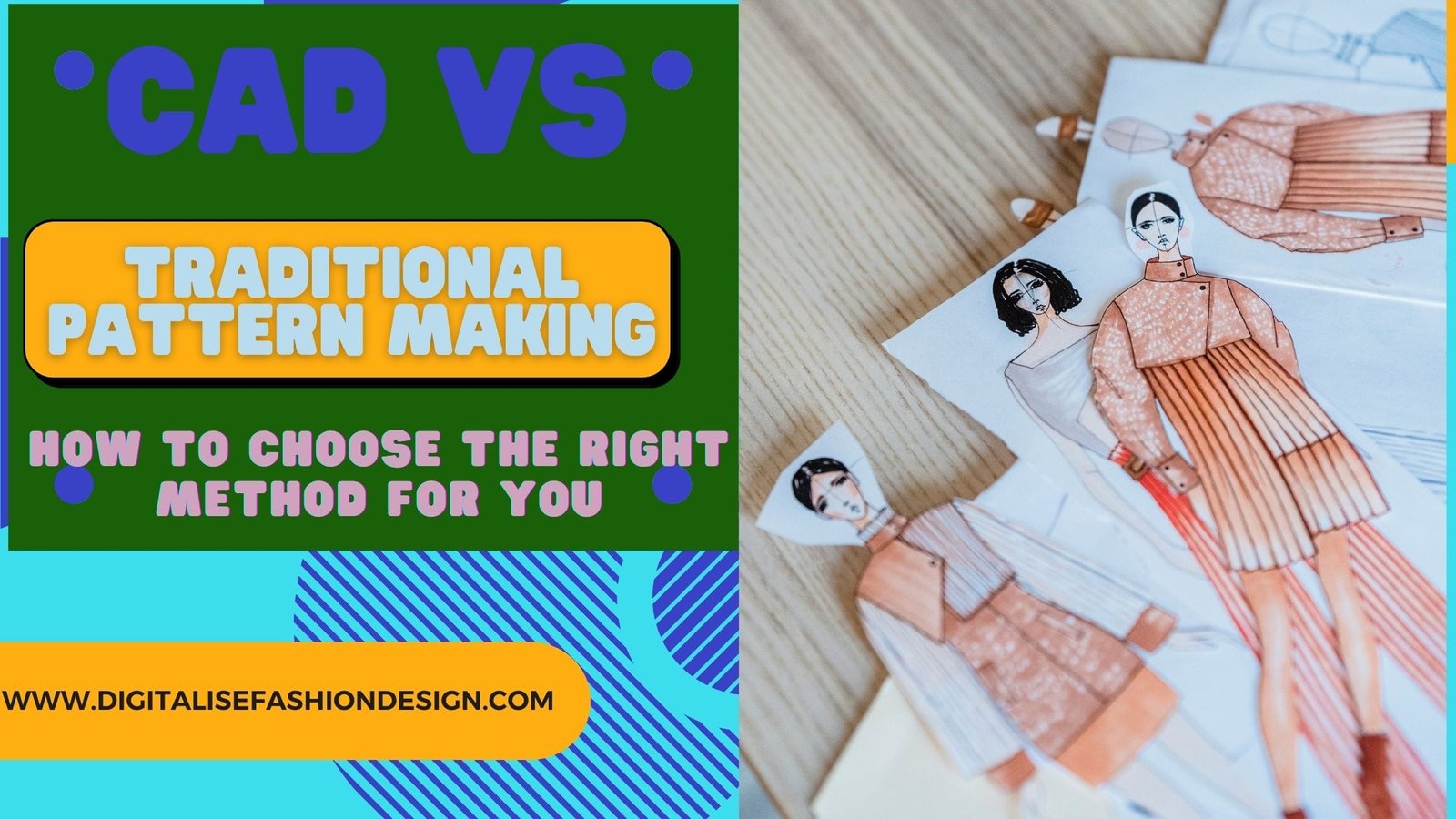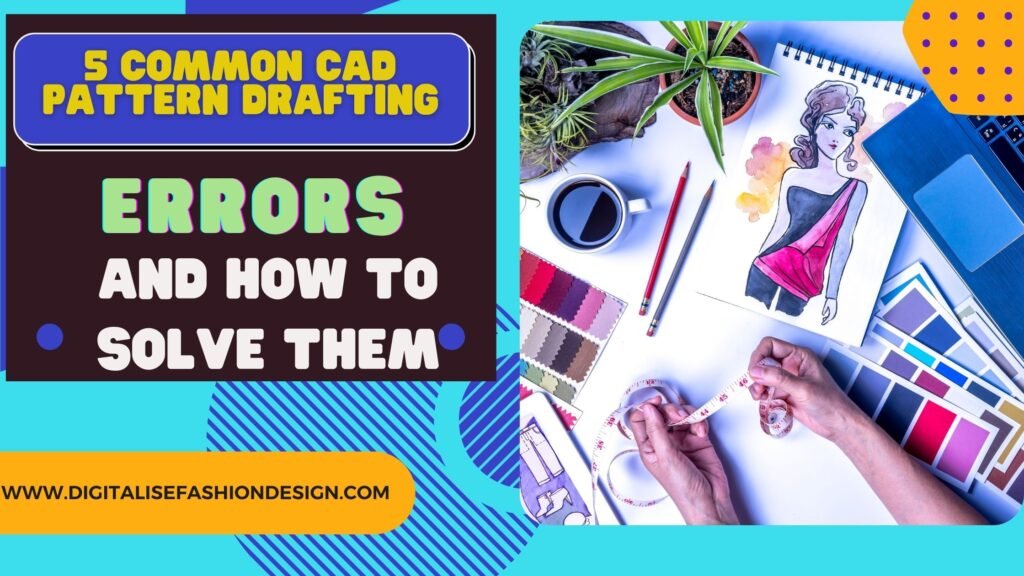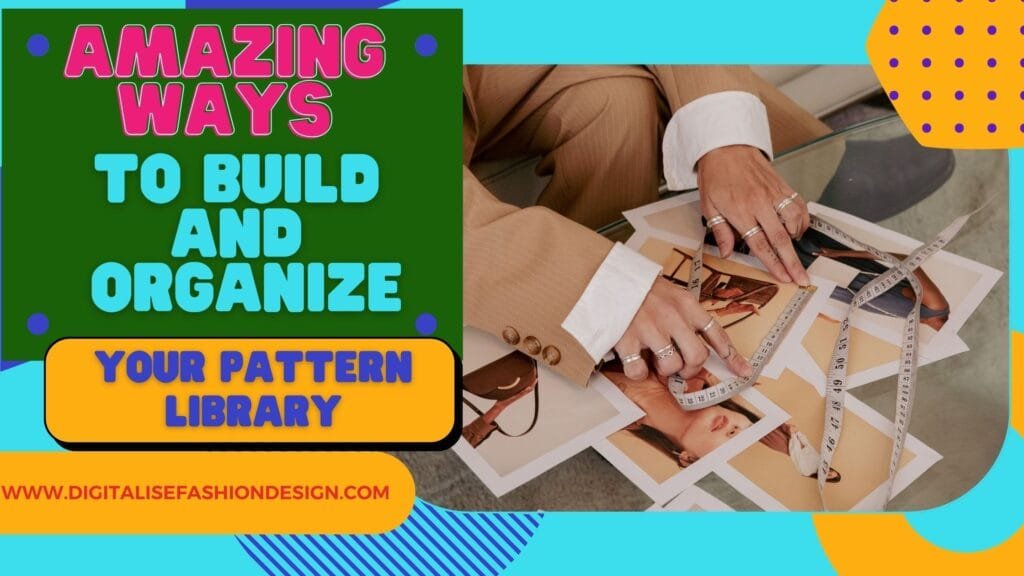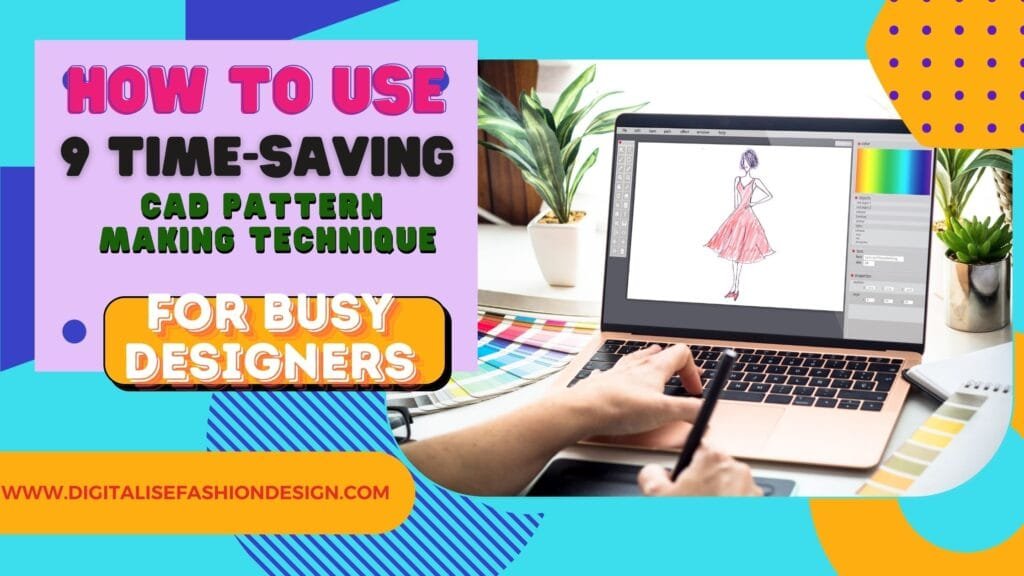CAD vs. Traditional Pattern Making: How to Choose the Right Method for You
I. Introduction
In this blogpost I will be comparing CAD vs Traditional Pattern Making.
lets first of all find out how pattern making actuaöly began .
A. The evolution of pattern making in fashion

Picture this: a bustling atelier filled with the soft rustle of paper patterns and the rhythmic snip of scissors.
For centuries, this was the heartbeat of fashion design. But just as the sewing machine revolutionized garment construction, we’re now witnessing another seismic shift in the world of pattern making.
Enter the digital age, where pixels are the new pins, and algorithms are the new apprentices.
B. The emergence of CAD in the fashion industry
Computer-Aided Design, or CAD, has burst onto the fashion scene like a model strutting down a high-tech runway. It’s not just changing the game; it’s rewriting the rulebook. But before we get caught up in the glitz and glamour of digital fashion design, let’s take a moment to appreciate where we’ve come from and where we’re headed.
II. Understanding Traditional Pattern Making
A. Techniques and tools
Traditional pattern making is an art form, a dance of paper, pencil, and precision. It’s tactile, it’s tangible, and for many, it’s deeply satisfying. The tools of the trade are simple yet effective: pattern paper, drafting tools, and a keen eye for detail.
It’s a craft that’s been honed over generations, passed down from master to apprentice like a cherished family recipe.
B. Advantages and limitations
The beauty of traditional methods lies in their simplicity and directness.
There’s an undeniable charm in creating something with your own hands. It’s perfect for one-off designs and small-scale production.
However, when it comes to CAD vs traditional pattern making to scaling up or making rapid changes, traditional methods can feel like trying to parallel park a limousine – cumbersome and time-consuming.
III. Exploring CAD Pattern Making
A. What is CAD dress pattern software?
CAD dress pattern software is like having a digital Swiss Army knife for fashion design. It’s a tool that allows designers to create, modify, and optimize patterns on a computer. Imagine being able to draft, alter, and grade patterns with the click of a mouse – that’s the power of CAD in fashion.
B. Popular CAD fashion design software options
The market is brimming with options, each with its own strengths:
- Pattern made for you
- Valentina Free CAD pattern drafting software
- Freesewing,org
- Inkscape
- lectra
- Optitex
- Audaces patterns
- Gerber Accumark
- Browzwear.com
- Tukacad
- Clo 3D
- lotta
- Marvelousdesigner
- Cochenille design studio
- Assyst CAD
- Whiterabbitcad
C. Key features of digital pattern making
Digital pattern making is like having a fashion fairy godmother. With features like automatic grading, easy modifications, and 3D visualization, it’s transforming “impossible” into “done in a jiffy”.
That is an amazing difference between CAD vs traditional pattern making
The ability to create digital pattern libraries and collaborate in real-time is changing the way designers work, making the process more efficient and interconnected than ever before.
IV. Comparing CAD vs. Traditional Pattern Making Methods
A. Accuracy and precision
While traditional methods rely on the steady hand of the pattern maker, CAD brings mathematical precision to the table. It’s like comparing a hand-drawn map to GPS – both can get you there, but one offers pinpoint accuracy.
B. Time efficiency
In the world of fast fashion, time is money. CAD pattern making tools can slash production times dramatically. It’s the difference between taking a scenic route and teleporting – you’ll get there faster, but you might miss some of the views along the way.
C. Cost considerations
Initially, investing in CAD software and training can feel like buying a designer handbag – it’s a splurge. However, in the long run, the efficiency gains can lead to significant cost savings, especially for larger operations.
It’s a classic case of spending money to make money.
D. Flexibility and modifications
Making changes to a physical pattern can be like trying to un-bake a cake. With CAD, modifications are as easy as hitting ‘undo’.
This flexibility allows for rapid prototyping and iterative design, a crucial advantage in today’s fast-paced fashion world.
V. The Learning Curve:CAD vs Traditional Pattern making
A. Mastering traditional pattern making
Learning traditional pattern making is like mastering a musical instrument. It takes time, patience, and a lot of practice. But once you’ve got it, it’s a skill you’ll have for life.
B. CAD pattern making for beginners
Stepping into the world of CAD can feel like learning a new language. It’s daunting at first, with all those buttons and menus. But fear not! With the right approach, even technophobes can become CAD wizards.
C. Available training options
From YouTube tutorials to professional CAD pattern making courses, there’s no shortage of learning resources. It’s like having a buffet of knowledge – you can sample a bit of everything or dig deep into your favorite dish.
OTHER INTERESTING BLOG POST
VI. Industry Applications: CAD vs Traditional Pattern Making
A. Pattern making in the fashion industry
In today’s fashion industry, pattern making is a hybrid beast. Many companies use a mix of traditional and CAD methods, leveraging the strengths of each approach. It’s like having the best of both worlds – the soul of craftsmanship with the power of technology.
B. CAD pattern making services
For smaller brands or independent designers, outsourcing to CAD pattern making services can be a game-changer. It’s like having a team of expert pattern makers at your fingertips, without the overhead of maintaining an in-house team.
C. Custom dress pattern making
The rise of CAD has breathed new life into custom dress pattern making. With digital tools, creating made-to-measure patterns is faster and more accurate than ever before. It’s bringing bespoke fashion back into the mainstream, one perfectly fitted garment at a time.
VII. Advanced Techniques and Innovations:CAD vs Traditional pattern making
A. 3D dress pattern making
3D dress pattern making is like stepping into the future. It allows designers to visualize and modify garments in a virtual environment, reducing the need for physical prototypes. It’s not just cool – it’s revolutionizing the design process.
B. Virtual garment draping
Imagine being able to see how a fabric drapes on a body without ever cutting a single piece of cloth. That’s the magic of virtual garment draping. It’s like having a crystal ball for fashion design, allowing you to predict and perfect the fall of a garment before it’s even made.
C. Digital fashion prototyping
Digital prototyping is changing the game in fashion design. It’s faster, cheaper, and more sustainable than traditional methods. Think of it as a dress rehearsal for your designs, allowing you to iron out any kinks before the big production.
VIII. Choosing the Right Method for You
A. Assessing your needs and goals
Choosing between CAD and traditional methods isn’t a one-size-fits-all decision. It’s about finding the right fit for your unique needs. Are you a small-scale artisanal designer, or are you aiming for mass production? Your answer will guide your choice.
B. Considering your working style
Some designers thrive on the tactile nature of traditional pattern making, while others love the precision and speed of CAD. It’s like choosing between painting and digital art – both are valid forms of expression, but one might resonate more with your personal style.
C. Evaluating available resources
Consider your budget, time, and access to training. CAD requires an initial investment in software and learning, while traditional methods might require more time but less upfront cost. It’s about balancing your resources with your aspirations.
IX. The Future of Pattern Making
A. Emerging fashion tech trends
The future of pattern making is as exciting as a fashion week runway. From AI-powered design assistants to blockchain for supply chain transparency, technology is set to transform every aspect of the fashion industry.
B. Integration of AI and pattern making algorithms
Imagine an AI that can predict fashion trends and automatically generate patterns. It sounds like science fiction, but it’s closer to reality than you might think. AI is set to become the ultimate fashion intern – always learning, never tiring, and full of creative surprises.
C. Virtual fitting rooms and digital fashion production
The line between physical and digital fashion is blurring. Virtual fitting rooms and digital-only fashion collections are no longer novelties but emerging markets. It’s a brave new world where your avatar might have a better wardrobe than you do!
X. Conclusion
As we’ve seen, both CAD and traditional pattern making have their place in the modern fashion landscape. The choice between them isn’t about right or wrong, but about finding the perfect fit for your needs, style, and goals.
Whether you’re team old-school or a digital devotee, remember that at the heart of it all is creativity and craftsmanship.
The tools may change, but the art of bringing beautiful designs to life remains. So, whether you’re wielding scissors or a stylus, keep pushing the boundaries of fashion. After all, in the world of design, the only constant is change!
XI. FAQs
- Q: Can I combine CAD and traditional pattern making methods?
A: Absolutely! Many designers use a hybrid approach, leveraging the strengths of both methods. You might draft initial designs by hand and then digitize them for further refinement and grading in CAD software. - Q: Is CAD pattern making software difficult to learn for someone with no tech background?
A: While there is a learning curve, many CAD programs are designed with user-friendly interfaces. With dedication and practice, even those without a tech background can become proficient. Many software companies offer tutorials and support to help you get started. - Q: Are there any free CAD pattern making software options for beginners?
A: Yes, there are some free and open-source options available, such as Valentina and Seamly2D. While they may not have all the features of premium software, they’re great for learning the basics of digital pattern making. - Q: How has CAD pattern making impacted sustainability in fashion?
A: CAD has significantly contributed to sustainability efforts by reducing material waste through more accurate patterns, enabling digital sampling to reduce physical prototypes, and facilitating made-to-measure production which can minimize overproduction. - Q: Can CAD pattern making completely replace traditional methods in the fashion industry?
A: While CAD is becoming increasingly prevalent, it’s unlikely to completely replace traditional methods. Many designers value the tactile experience and creative process of hand drafting, especially in haute couture and artisanal fashion. The future likely lies in a balanced integration of both methods.








